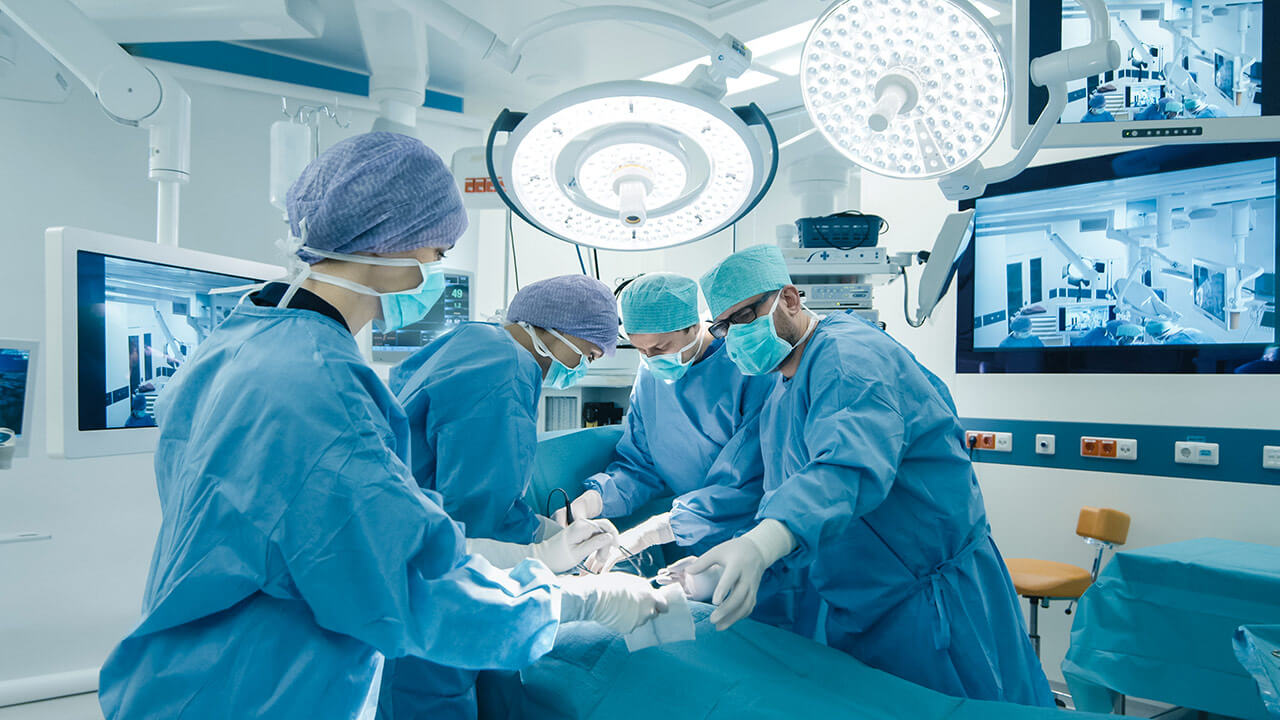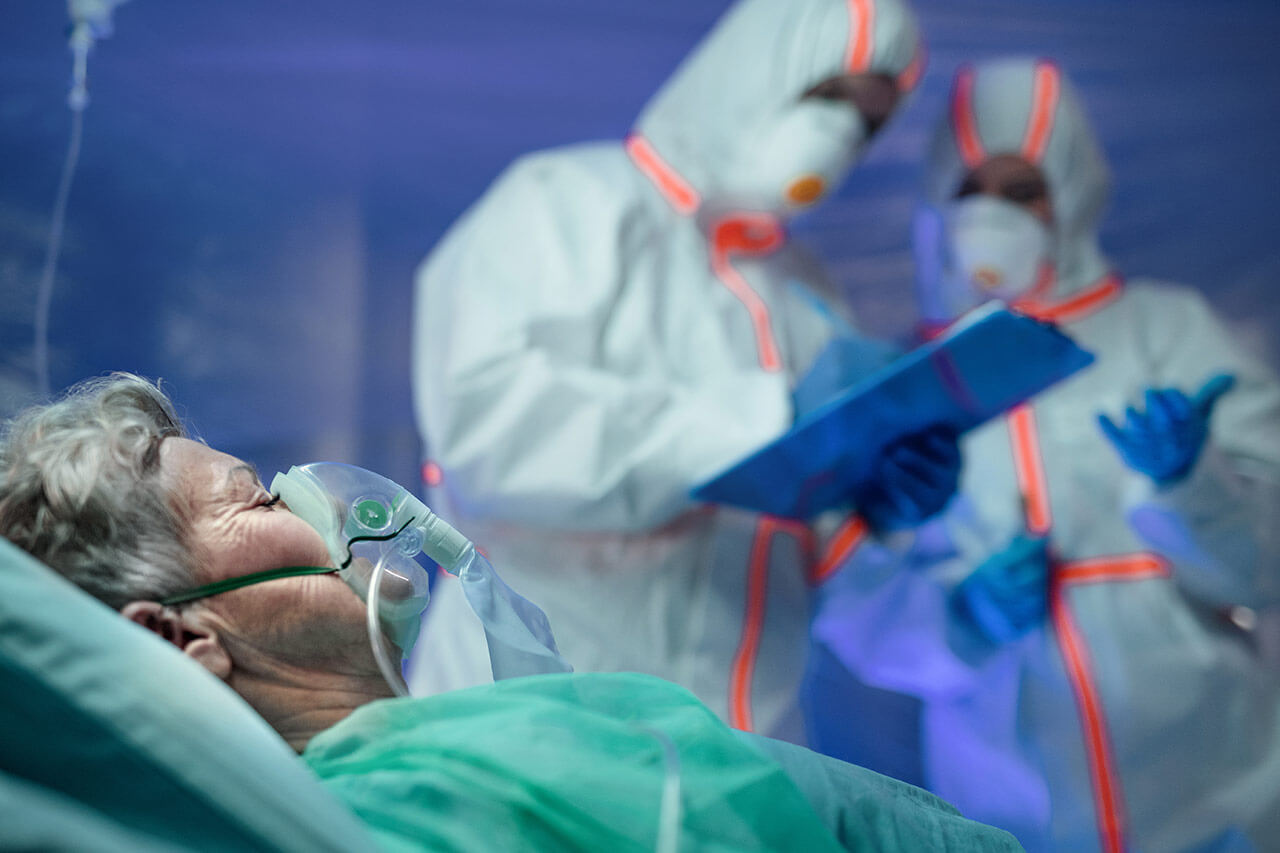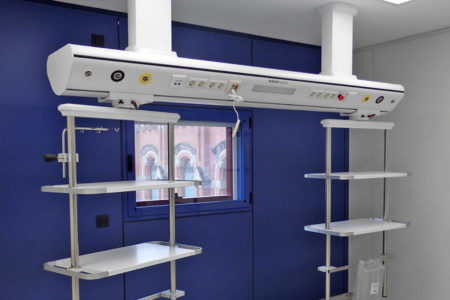Nous pouvons tous apprendre de nos erreurs, mais de nombreuses erreurs sont fatales et doivent être évitées, en particulier lorsqu’il s’agit de soins médicaux et de santé. 4 patients sur 10 dans le monde subissent des dommages dans le cadre des soins de santé primaires et ambulatoires.
80% de ces dommages peuvent être évités. Dans ce contexte, la sécurité des patients est présentée comme une discipline dans laquelle travaillent tous les types d’hôpitaux et de centres de santé. En fin de compte, les soins et la guérison sont leur raison d’être. Cependant, on parle peu de la manière dont la sécurité électrique des hôpitaux peut contribuer à assurer le bien-être des patients.
Qu’est-ce que la sécurité des patients?
En 1948, la Déclaration des droits de l’homme a été promulguée, selon laquelle “toute personne a droit à un niveau de vie suffisant pour assurer sa santé et son bien-être, ainsi que sa famille…”.
Bien que les soins de santé soient un droit de l’homme incontestable, la réalité est que, dans de nombreux cas, ces soins sont déficients, en particulier dans les pays les plus pauvres.
Dans ce contexte, la culture de la sécurité des patients prend de l’importance et les gouvernements, les États et les institutions du monde entier ont mis sur la table une série de mesures et de recommandations dans le but de clarifier les paramètres qui définissent ce qu’est la sécurité des patients. Et, de cette manière, travailler à des soins de santé sûrs et de qualité.

L’Organisation mondiale de la santé définit la sécurité des patients comme une discipline dont l’objectif est de “prévenir et de réduire les risques, les erreurs et les dommages subis par les patients lors de la prestation de soins de santé”. L’OMS soutient également que la pierre angulaire de la culture de la sécurité est “la meilleure continuité fondée sur l’apprentissage à partir des erreurs et des événements indésirables”.
Dans le même ordre d’idées, Cristián Rocco et Alejandro Garrido, auteurs de la publication Patient Safety and Safety Culture, considèrent que cette discipline doit poursuivre l’objectif de “réduire les dommages et réduire les erreurs, puisque l’erreur est une condition inhérente à la condition humaine”.
Dans le cas de l’Espagne, l’étude nationale de 2016 sur les effets indésirables liés à l’hospitalisation (étude ENEAS) a examiné 5 624 dossiers médicaux, dans lesquels 8,4 % des événements indésirables ont été trouvés. 4,4 % ont entraîné la mort et 42,8 % étaient évitables. Une fois encore, si l’on extrapole ces données aux 4,6 millions d’hospitalisations en 2006, plus de 7 300 décès par an pourraient être évités.
Conséquences du manque de sécurité des patients
Dans de nombreux cas, la conséquence la plus immédiate de l’absence de sécurité des patients est la mort. Tout au long de l’année, on peut lire de nombreux articles sur des personnes décédées à cause de soins tardifs dans des centres de santé effondrés, par exemple. Dans le même ordre d’idées, l’étude de Rocco et Garrido mentionne comme référence To Err is Human, une étude publiée en 1999 par l’Institut de médecine des États-Unis.
Dans le cadre de cette étude, 30.000 dossiers médicaux ont été examinés et ont permis de détecter 3,7 % d’événements indésirables, dont 58 % étaient évitables et 13,6 % ont entraîné la mort. Les auteurs de la publication ont extrapolé ces données au volume des hospitalisations annuelles. Ils concluent que les événements indésirables liés aux soins de santé pourraient causer entre 44.000 et 98.000 décès aux Etats-Unis, pour un coût compris entre 17 et 28 millions de dollars par an.
La conclusion est claire: comme le dit la publication américaine, l’erreur est humaine, mais une culture de la sécurité des patients permet de réduire cette marge d’erreur et de sauver la vie de milliers de personnes.

Les événements indésirables les plus courants
La première étape d’une culture de la sécurité des patients efficace et de qualité est la prévention des risques et la détection et l’investigation des erreurs médicales et des événements indésirables courants. En ce sens, une étude ENEAS de 2005 a établi que les événements indésirables les plus fréquents étaient liés aux éléments suivants
- Médicaments
- l’infection nosocomiale
- Les soins
- La procédure
- Le diagnostic
Au niveau mondial, l’OMS signale également des situations préoccupantes très similaires:
- Les erreurs de médication sont l’une des principales causes de dommages et de blessures évitables dans les soins de santé.
- Les infections touchent 7 personnes hospitalisées sur 100 dans les pays à revenu élevé et 10 sur 100 dans les pays à revenu faible ou intermédiaire.
- 25 % des patients souffrent de complications dues à des procédures chirurgicales dangereuses. Dans la plupart des cas, le patient meurt pendant l’intervention ou immédiatement après.
- Pratiques d’injection dangereuses dans les établissements de soins de santé.
- Les erreurs de diagnostic touchent environ 5 % des adultes qui reçoivent des soins ambulatoires.
D’autre part, il existe d’autres types d’événements indésirables liés aux installations de l’hôpital ou du centre de santé. Dans ce cas, nous sommes confrontés à deux grands types d’accidents:
- Les accidents liés au bâtiment et à ses installations.
- Les catastrophes naturelles : accidents liés à l’environnement et aux problèmes météorologiques.
Existe-t-il une réglementation sur les aspects clés de la sécurité des patients?
Comme nous l’avons dit précédemment, dans le domaine professionnel, la sécurité des patients est devenue un sujet d’étude sur lequel il convient de légiférer, tant au niveau national qu’international. En ce sens, il existe quelques événements et documents clés importants pour la promotion d’une culture de la sécurité des patients:
- En 2004, l’Alliance mondiale pour la sécurité des patients (aujourd’hui le Programme pour la sécurité des patients) a été créée. Son principal objectif est de “ne pas nuire”, comme l’indique sa devise.
- Depuis 2005, il existe le Joint Commission International Center for Patient Safety, considéré comme le premier centre au monde dédié exclusivement à la sécurité des patients et collaborant avec l’OMS.
- En 2006, dans le cadre de la Déclaration de Varsovie sur la sécurité des patients, les besoins suivants ont été soulignés : établir un système de notification des incidents, promouvoir une approche systématique de la culture de la sécurité des patients et impliquer les citoyens et les patients dans l’amélioration de cette sécurité.
- L’Espagne, quant à elle, s’est dotée d’une stratégie nationale de sécurité des patients, un document dont l’objectif principal est de promouvoir et d’améliorer la culture de la sécurité dans les organisations du secteur de la santé.
En Colombie, par exemple, dans le domaine de la sécurité hospitalière, il existe le certificat RETIE (RETIE Technical Regulation of Electrical Installations). L’objectif de cette certification est de garantir “la protection des personnes, en prévenant, minimisant ou éliminant les risques d’origine électrique”.

L’importance de la sécurité hospitalière
Bien qu’il y ait beaucoup de législation et d’intérêt pour la promotion d’une culture de la sécurité des patients, celle-ci se concentre exclusivement sur la sphère d’action humaine, en se concentrant sur la manière d’éviter les erreurs humaines qui entraînent un préjudice pour le patient. En revanche, la littérature scientifique consacrée à la sécurité des hôpitaux, un pilier essentiel des soins de santé, n’est pas très abondante.
Les hôpitaux sont des espaces uniques, destinés aux soins des patients et des malades ou à ceux qui doivent subir une intervention chirurgicale. C’est pourquoi il s’agit d’un scénario de santé où la sécurité doit être appliquée de manière concrète, tant en ce qui concerne les installations que le travail médical au sein du centre hospitalier.
Bien qu’il ne soit pas courant que des pannes électriques se produisent dans les hôpitaux … cela peut arriver. C’est ce que démontrent les données du rapport Structure Fires in Health Care Facilities, préparé en 2017 aux États-Unis par la National Fire Protection Association NFPA. L’étude recueille des informations pour la période 2011-2015 et détecte en moyenne plus de 5 700 incendies dans les Centres de santé. La deuxième cause de ces incendies est la défaillance des installations électriques.

Protection et ingénierie hospitalière : solutions
En tant qu’experts en ingénierie hospitalière, nous souhaitons évoquer quelques lignes directrices à prendre en compte pour garantir le bon état de la sécurité électrique d’un hôpital ou d’un centre de soins de santé. Elles sont les suivantes:
- Il est nécessaire de disposer d’un système d’alimentation sans interruption afin que les zones les plus critiques, telles que les unités de soins intensifs ou les salles d’opération, disposent toujours de charges spécifiques en cas de défaillance du système d’alimentation principal.
- Pour la détection et la localisation automatiques des pannes électriques, il est nécessaire de disposer d’un système d’alimentation informatique.
- Disposer d’une équipe d’experts offrant des conseils en matière de sécurité électrique.
- Pour éviter les tensions de contact dans les zones critiques, les zones les plus sensibles des hôpitaux sont les connexions à la terre.
Conclusion
La sécurité des patients est essentielle pour fournir des soins médicaux efficaces et de qualité. Cependant, dans la plupart des cas, l’approche donnée à cette culture de la sécurité des patients se concentre sur la sphère humaine, sans prendre en compte l’importance d’éviter les risques dans les installations électriques hospitalières.
Avec cet article, ETKHO a voulu valoriser l’importance de l’ingénierie hospitalière et des solutions technologiques de haute qualité pour préserver la sécurité des patients.









